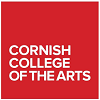
| Ranking | School | City |
|---|---|---|
| 1 | University of Washington | Seattle |
| 2 | Cornish College of The Arts | Seattle |
| 3 | Western Washington University | Bellingham |
| 4 | Walla Walla University | College Place |
Our 2019 rankings of the top graphic design school programs in Washington. For an explanation of the ranking criteria, click here.
 1. University of Washington, Seattle, Washington
1. University of Washington, Seattle, Washington
The University of Washington (UW) was founded in 1861. The Seattle campus is home to more than 44,600 students, enrolled in over 165 majors across 16 colleges and schools and in 79 departments. The College of Arts & Sciences is home to the School of Art + Art History + Design (SoA+AH+D), which offers a Bachelor of Design (BDes) in Visual Communication Design and a Master of Design (MDes).
One of the largest undergraduate programs at the University of Washington, Visual Communication Design emphasizes “visual problem solving, organizational skills, and information theory.” Students in the programs engage in all phases of typography, information design, design systems, exhibition design, publication design, new media, and visual methods/processes. Sample courses for the BDes include Typography, Human Centered Design, Color + Composition, Interface Design, Motion Design, Visual Systems, Information Design, and Publication Design.
Sample MDes courses include advanced Design Foundations, Design Methods, Typography, Industrial Design, Interface Design, Case Studies in Corporate Identity, Exhibition and Installation Design, Interaction Design, Information Design, Design Graduate Studio, and Graduate Student Teaching Mentorship.
Students in both programs will have the opportunity to compete for more than 100 seats in the SoA+AH+D study abroad program to explore art, art history, and design in an international context. Past students have studied in Rome, Japan, Spain, and Tuscany.
 2. Cornish College of The Arts, Seattle, Washington
2. Cornish College of The Arts, Seattle, Washington
Cornish College of The Arts began in 1914. The school serves more than 700 students enrolled in BFA programs in the Performing and Visual Arts, as well as a Bachelor of Music degree, multiple public programs, and extension courses. The Cornish Design Department offers a BFA in Design with a Specialization in Visual Communication and Motion Design.
The program covers three areas: Narrative Systems, Type and Image, and User Experience. Sample courses in Type and Image include Branding, Graphic Design, Illustration, Poster Design, Printmaking/Bookarts, Product Packaging, Publishing, and Typography. Students can also expect to take courses in the Narrative Systems and User Experience areas such as 2D Animation, Brand Experience, Brand Storytelling, Graphic Novels, HoloLens, Information Visualization, Prototyping, User Research, Wearables, and Web Design.
Per the school, during year one, students will study Foundations, which provides the basic skills they need to excel in Design's three areas. The first year consists of project-based learning. Second year students declare a concentration and juniors will benefit from a more independent structure, including an internship opportunity. In the senior year, students will focus on the Capstone Project, "in which all of the student’s skills in design process, systems thinking, creative planning, and hand and digital skills come together in an exhibition at the end of the year."
 3. Western Washington University, Bellingham, Washington
3. Western Washington University, Bellingham, Washington
Western Washington University (WWU) was founded as the New Whatcom Normal School in 1893. The school serves 15,915 students enrolled in more than 160 academic programs through eight schools. The College of Fine and Performing Arts offers both BA and BFA degrees in Design. Per the school, the “BFA is the professional degree option for students admitted to the Design Program. The BFA degree option is a highly competitive degree limited to a maximum of 18 students per year. Courses in the senior year focus on the integration of graphic, production and digital media design in the solution of visual communication problems.”
Program highlights include opportunities to work with faculty outside of class and the Production Lab. The Lab “provides students access to equipment found in the industry and establishes a learning environment that allows for hands-on education. Through the lab, students have access to hand and power guillotine paper cutters, foil-stamping, various mechanical and perfect binding units, offset and photopolymer plate making units, medium and large format inkjet printers, two Vandercook proofing letterpresses as well as a Heidelberg GTO offset press.”
Sample courses for the 180 credit hour program Design View, Digital Media Design, Graphic Design 2D and 3D, Professional Practices in Visual Communication Design, Typography, and Visual Communication. BFA students will complete the BFA workshop, and all students will have the opportunity to complete an internship, worth 10 credits, between their junior and senior years.
 4. Walla Walla University, College Place, Washington
4. Walla Walla University, College Place, Washington
Walla Walla University (WWU)was founded in 1892. The school serves around 1,855 students enrolled in dozens of majors, minors, and programs. The Department of Technology offers several programs for aspiring Graphic Designers. Options include AS and BS degrees in Graphic Design, a BS in Product Design, and a Graphic Design Minor.
Graphic Design is a broad field of study that covers packaging, signage, documents, books, logos, and digital publishing, such as eBooks and digital magazines. Students in the program will complete the minimum of 80 quarter hours in the majors, with courses such as Advanced Digital Photography, Computer Illustration, Design Theory, History, and Criticism, Digital Imaging, Environment Design, Fundamentals of Packaging, Graphic Design and Layout, Multimedia Publishing, Technology and Society, and Web Publishing.
Students will complete a Senior Project as well as two portfolio courses including Portfolio: Brand Identity and Portfolio Design. Per the school, the Product Design Program “focuses on the design of user-friendly products and systems. Through an insight-driven design process, students develop meaningful and innovative products. Students work in a studio environment where collaboration and critical thinking are encouraged.”
Product Design students will take a variety of classes in design principles, theory, and design thinking methodologies that serve as the foundation for decision-making. Students supplement their design education by taking courses in Drawing and Modeling (both manually and by computer), Illustration, Fine Art, Graphic Design, Material Studies, Photography, and Computer 3D Modeling.”
Students in all degree programs will have the opportunity to complete an internship.

